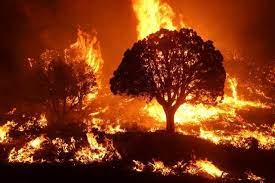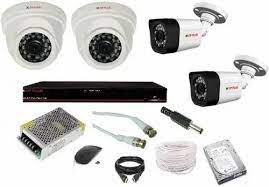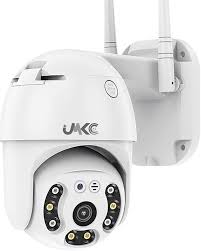Fires: Understanding the Dangers and Taking Preventive Measures
Fires are destructive forces that can cause immense damage to property, the environment, and most importantly, human lives. They can occur unexpectedly and spread rapidly, leaving devastation in their wake. It is crucial for everyone to understand the dangers of fires and take proactive measures to prevent them.
Firstly, it’s important to recognize the potential causes of fires. Common causes include electrical faults, faulty wiring, open flames, cooking accidents, smoking materials, and arson. By being aware of these potential hazards, we can take steps to minimize the risk.
One of the most effective ways to prevent fires is by ensuring that our homes and workplaces have adequate fire safety measures in place. This includes installing smoke detectors on every floor and regularly testing them to ensure they are functioning properly. Additionally, having fire extinguishers readily available in easily accessible locations can help contain small fires before they escalate.
Proper maintenance of electrical systems is crucial in preventing electrical fires. Regularly inspecting wiring and promptly addressing any issues or signs of wear can significantly reduce the risk of an electrical fire outbreak. Avoid overloading power outlets with too many appliances or using damaged electrical cords as these practices increase the likelihood of a fire.
Fire safety also extends beyond individual responsibility; it should be a collective effort within communities as well. Educating children about fire safety from an early age is vital so that they grow up with a strong understanding of how to prevent fires and respond appropriately in case of an emergency.
In addition to preventive measures, it is essential for individuals to know how to react if a fire does occur. Establishing an evacuation plan with clearly marked escape routes and designated meeting points is crucial for ensuring everyone’s safety during an emergency situation. Regularly practicing drills helps familiarize everyone with the procedures so that they can act swiftly if needed.
Furthermore, it’s important to emphasize the significance of contacting emergency services immediately when a fire breaks out. Time is of the essence, and the sooner firefighters arrive at the scene, the better chance they have of extinguishing the fire before it spreads.
Lastly, raising awareness about fire safety in our communities is crucial. Local authorities, educational institutions, and workplaces should organize campaigns and workshops to educate people on fire prevention techniques, safety protocols, and the importance of having working smoke detectors.
Fires are devastating events that can have long-lasting effects on individuals and communities. By understanding the dangers associated with fires and taking preventive measures, we can significantly reduce the risk of these destructive incidents. Remember, fire safety is everyone’s responsibility, and together we can create safer environments for ourselves and future generations.
Frequently Asked Questions About Fires: Causes, Prevention, Safety, and Response
- What causes fires?
- How can I prevent a fire from starting?
- What should I do if there is a fire in my home?
- How can I protect myself and my family from a fire?
- What should I do if I am caught in a burning building?
- How can I help someone who has been injured by a fire?
What causes fires?
Fires can be caused by a variety of factors, and understanding these causes is crucial in preventing them. Here are some common causes of fires:
- Electrical faults: Faulty electrical systems, overloaded circuits, or damaged wiring can generate heat and sparks, leading to fires.
- Open flames: Unattended candles, matches, lighters, or any open flame can quickly ignite nearby combustible materials.
- Cooking accidents: Leaving cooking unattended or mishandling flammable materials in the kitchen can result in fires.
- Smoking materials: Carelessly discarded cigarettes or improper disposal of smoking materials can easily start fires, especially in dry environments.
- Arson: Deliberate acts of setting fire to property are a significant cause of fires. Arson poses a serious threat to both property and human lives.
- Heating equipment: Malfunctioning heating appliances, such as furnaces or space heaters, can trigger fires if not properly maintained or used correctly.
- Flammable liquids: Improper storage or handling of flammable liquids like gasoline, solvents, or oils can lead to accidental ignition and subsequent fires.
- Electrical appliances and cords: Overloaded power outlets, damaged cords, or faulty appliances can generate excessive heat and sparks that ignite nearby materials.
- Natural disasters: Lightning strikes during thunderstorms and wildfires caused by natural phenomena like droughts or volcanic eruptions are natural causes of fires.
- Human error: Accidental incidents such as leaving stoves unattended, knocking over candles, or mishandling flammable substances due to negligence contribute to fire outbreaks.
It is essential to be aware of these potential fire hazards and take appropriate precautions to minimize the risk of fires occurring. Regular maintenance checks on electrical systems, safe handling of open flames and flammable materials, proper storage of hazardous substances, and practicing fire safety protocols are all crucial steps in preventing fires caused by human activities.
How can I prevent a fire from starting?
Preventing a fire from starting requires a combination of awareness, caution, and proactive measures. Here are some essential steps you can take to minimize the risk of fires:
- Install smoke detectors: Place smoke detectors on every floor of your home or workplace, especially in sleeping areas. Regularly test them to ensure they are functioning correctly and replace batteries as needed.
- Handle open flames responsibly: Never leave candles, stoves, or fireplaces unattended. Keep flammable materials away from open flames and extinguish them before leaving the room or going to bed.
- Practice safe cooking habits: Stay vigilant while cooking and never leave the kitchen unattended when using heat sources like stovetops or ovens. Keep flammable items away from the cooking area and use timers as reminders.
- Maintain electrical systems: Regularly inspect electrical cords, outlets, and appliances for signs of damage or wear. Avoid overloading outlets with too many devices and unplug appliances when not in use.
- Use caution with heating devices: Keep portable heaters at least three feet away from flammable objects such as curtains or furniture. Turn off heaters before leaving the room or going to sleep.
- Properly dispose of smoking materials: If you smoke, make sure to fully extinguish cigarette butts in designated ashtrays or containers filled with sand or water. Never discard them in plant pots or other combustible materials.
- Store flammable substances safely: Keep flammable liquids such as gasoline, propane, or cleaning agents stored in well-ventilated areas away from heat sources and out of reach of children.
- Be cautious with electrical equipment: Unplug appliances when not in use and avoid running cords under rugs or furniture where they can overheat.
- Maintain outdoor fire safety: If you have a backyard fire pit or grill, ensure it is placed on a non-flammable surface at a safe distance from structures and vegetation. Always fully extinguish fires before leaving the area.
- Educate yourself and others: Stay informed about fire safety practices and share this knowledge with family members, friends, and colleagues. Teach children about fire safety from a young age, including the importance of not playing with matches or lighters.
Remember, prevention is key when it comes to fire safety. By implementing these preventive measures and remaining vigilant, you can significantly reduce the risk of fires in your home or workplace.
What should I do if there is a fire in my home?
If there is a fire in your home, it is crucial to act quickly and follow these essential steps:
- Stay calm and alert: It’s natural to feel panicked, but try to stay as calm as possible. Clear thinking and quick decision-making are key during emergencies.
- Alert everyone in the house: Shout or use a loud alarm to notify everyone in the home about the fire. Time is of the essence, so ensure that everyone is aware of the danger and ready to evacuate.
- Evacuate immediately: Leave the building as soon as possible. Do not waste time gathering belongings or searching for pets. Every second counts during a fire, so prioritize your safety and that of others.
- Crawl low if necessary: If there is smoke in the air, stay close to the ground where the air will be less toxic. Smoke rises, so crawling can help you breathe better and see more clearly.
- Test doors before opening them: Before opening any doors, check if they are hot using the back of your hand or by touching a doorknob lightly. If it feels hot or you see smoke seeping through, do not open it as it may lead to more danger on the other side.
- Use designated escape routes: If you have established an evacuation plan beforehand, follow those designated routes to exit safely. Stick to primary escape routes whenever possible but have alternative routes planned in case they become blocked.
- Close doors behind you: As you leave each room, close the doors behind you to help slow down the spread of fire and smoke throughout the house.
- Never use elevators: During a fire, elevators should never be used as they can malfunction or take you directly into danger zones. Always use stairs for evacuation.
- Call emergency services: Once you are outside and at a safe distance from the building, dial emergency services (such as 911) to report the fire. Provide them with accurate information about the location and severity of the fire.
- Wait at a designated meeting point: Establish a safe meeting point away from the building where everyone can gather after evacuating. This will help ensure that everyone is accounted for and can be quickly identified by emergency responders.
Remember, personal safety should always be your top priority during a fire. Do not attempt to re-enter the building for any reason until authorities have declared it safe to do so.
How can I protect myself and my family from a fire?
Protecting yourself and your family from a fire is of utmost importance. Here are some essential steps you can take to increase fire safety in your home:
- Install Smoke Detectors: Ensure that smoke detectors are installed on every floor of your home, including inside bedrooms and near the kitchen. Test them regularly to ensure they are functioning correctly, and replace batteries as needed.
- Create an Escape Plan: Develop a detailed escape plan with multiple exit routes from each room in your house. Practice this plan with your family regularly so that everyone knows what to do in case of a fire.
- Establish Meeting Points: Designate safe meeting points outside the house where all family members should gather after evacuating. This will help ensure that everyone is accounted for and safe.
- Check Electrical Systems: Regularly inspect electrical wiring, outlets, and appliances for any signs of damage or malfunction. Avoid overloading outlets and use surge protectors when necessary.
- Use Candles Safely: If you use candles, keep them away from flammable materials and never leave them unattended. Consider using flameless LED candles as a safer alternative.
- Practice Safe Cooking Habits: Never leave cooking unattended on the stove or in the oven, as this is a common cause of house fires. Keep flammable items away from heat sources and use timers as reminders.
- Store Flammable Materials Properly: Keep flammable liquids such as gasoline, paint thinners, and cleaning solvents stored in well-ventilated areas away from heat sources or open flames.
- Maintain Heating Equipment: Have your heating systems, chimneys, and vents inspected and cleaned regularly by professionals to prevent potential fire hazards.
- Handle Smoking Materials Safely: If you smoke, make sure to properly extinguish cigarettes or cigars in designated ashtrays filled with sand or water. Never smoke in bed or when drowsy.
- Keep Fire Extinguishers Handy: Place fire extinguishers in easily accessible locations throughout your home, such as the kitchen, garage, and near fire-prone areas. Learn how to use them effectively.
- Teach Children Fire Safety: Educate your children about the dangers of fire and teach them basic fire safety practices. Ensure they know how to call emergency services and what to do in case of a fire.
- Stay Informed: Stay updated on fire safety guidelines and regulations in your area. Participate in community fire safety programs and workshops to enhance your knowledge and preparedness.
Remember, prevention is key when it comes to fire safety. By implementing these measures and staying vigilant, you can significantly reduce the risk of a fire occurring in your home and protect yourself and your loved ones from potential harm.
What should I do if I am caught in a burning building?
If you find yourself caught in a burning building, it is crucial to stay calm and take immediate action to ensure your safety. Here are some steps to follow:
- Alert others: Immediately notify anyone in the vicinity about the fire. Yell or use a whistle to attract attention and inform others of the situation. This will help ensure that everyone is aware and can take appropriate action.
- Stay low: Smoke rises, so it’s important to stay close to the ground where the air is less toxic. Crouch or crawl if necessary, covering your mouth and nose with a cloth or clothing to reduce inhalation of smoke.
- Check doors for heat: Before opening any doors, check their temperature with the back of your hand. If a door feels hot, do not open it as it may lead to more intense flames or smoke on the other side. Instead, try finding an alternative exit.
- Find an exit route: If possible, locate the nearest emergency exit or stairwell and proceed towards it calmly and swiftly. Avoid using elevators as they may malfunction during a fire.
- Close doors behind you: As you move through the building, close doors behind you to slow down the spread of fire and smoke.
- Communicate with emergency services: If you have access to a phone or mobile device, call emergency services immediately and provide them with accurate information about your location within the building.
- Signal for help: If you are unable to escape through exits or windows, attract attention by signaling from a window using lights, waving clothing, or any available objects that can be seen from outside.
- Seal yourself in if necessary: If trapped in a room without any means of escape, try sealing off the room as best as possible using wet towels or sheets to block gaps under doors and vents. This can help prevent smoke from entering while waiting for rescue.
- Stay near a window: If you are unable to exit the building, stay close to a window where you can be easily seen by firefighters. Open the window slightly for fresh air but be mindful of drawing in smoke.
Remember, it is crucial to follow the instructions of firefighters or rescue personnel when they arrive. They are trained to handle emergency situations and will guide you to safety. Taking proactive steps to prevent fires and regularly practicing fire drills can also help minimize the risk of being caught in such situations.
How can I help someone who has been injured by a fire?
If you encounter someone who has been injured by a fire, it is crucial to act quickly and calmly to provide immediate assistance. Here are some steps you can take to help:
- Ensure your safety: Before approaching the injured person, ensure that the immediate area is safe and free from any ongoing fire or potential hazards. Your safety should always be a priority.
- Call emergency services: Dial the emergency hotline in your country (such as 911) to report the incident and request medical assistance. Provide accurate information about the location and nature of the injuries.
- Assess the situation: Evaluate the injured person’s condition without moving them, if possible. Determine if they are conscious, breathing, or experiencing any severe bleeding or burns.
- Provide first aid: If you have basic first aid knowledge, apply it appropriately based on the person’s injuries. For burns, cool the affected area gently with cool (not cold) running water for at least 10 minutes to alleviate pain and prevent further tissue damage. Cover any open wounds with sterile dressings or clean cloth to minimize infection risk.
- Support their breathing: If the person is having difficulty breathing due to smoke inhalation or other respiratory issues, help them find a safe place with fresh air. Encourage them to sit upright and breathe slowly.
- Reassure and comfort: Remain calm and provide reassurance to the injured person while waiting for medical professionals to arrive. Offer words of comfort and let them know that help is on its way.
- Do not administer medication or ointments: Unless you are a trained medical professional, avoid administering any medications or ointments without proper guidance from emergency services personnel.
- Stay with them until help arrives: It is important to stay with the injured person until professional medical assistance arrives on the scene. Monitor their condition closely and be prepared to provide updates to emergency responders when they arrive.
Remember, providing immediate assistance is crucial, but it is equally important to let professionals handle the situation. Once medical help arrives, they will be able to assess the severity of the injuries and provide appropriate treatment.




